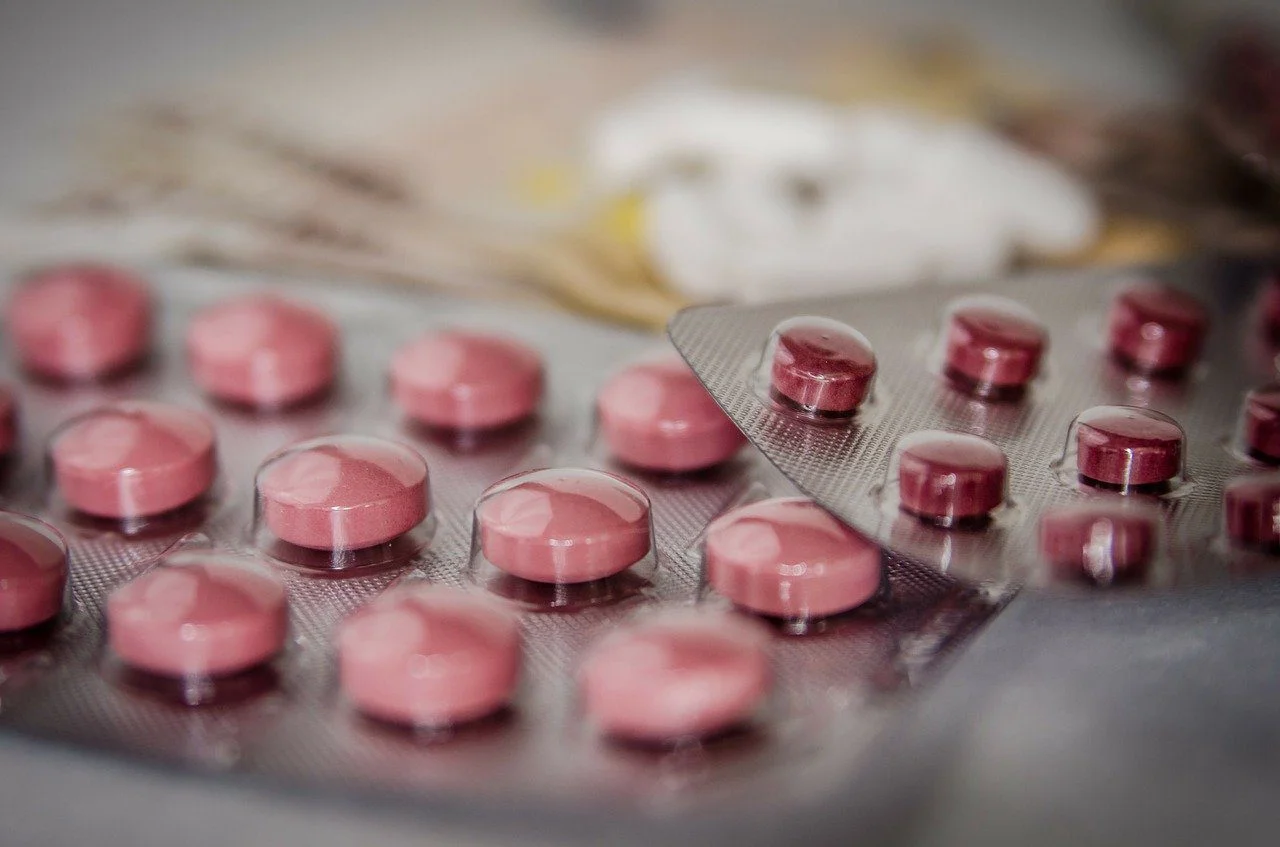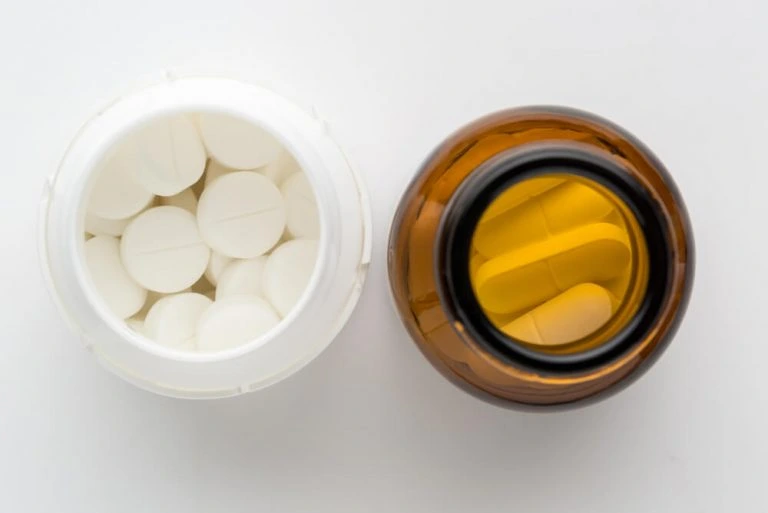Naltrexone
Naltrexone is a medication approved by the Food and Drug Administration (FDA) for the treatment of opioid addiction and alcoholism. Unlike many other drugs used in medication-assisted treatment (MAT), naltrexone is not addictive and has minimal risk for abuse.

What is Naltrexone and What is it Used For?
Naltrexone is available as a pill or an intramuscular extended-release formulation. The pill is approved for the treatment of alcohol use disorder, whereas the injectable option is approved for. Both opioid addiction and alcoholism. It is not typically recommended for people younger than 18 years old or for patients with medical conditions, such as liver damage or kidney problems.
The following are the brand names for the different forms of naltrexone as well as the standard dose:
- ReVia: 50 mg once-a-day tablet
- Depade: 50 mg once-a-day tablet
- Vivitrol: 380 mg once-a-month injectable form
Naltrexone is a medication-assisted treatment option for alcohol use disorder and opioid use disorder. Medication-assisted treatment consists of the monitored use of naltrexone as well as behavioral therapy or counseling to help rectify maladaptive behaviors and teach you healthy coping skills. Combining naltrexone with various forms of therapy ensures that you are receiving comprehensive treatment that fully addresses your addiction.
Naltrexone for Alcohol Addiction
In order to begin using naltrexone for your alcoholism, you must not be dependent on alcohol or any other drugs due to side effects like nausea. That means you should first complete a medical detox program, in which you receive alcohol detox medications, such as benzodiazepines, and around-the-clock support and care while you go through alcohol withdrawal—this is to ensure your safety and comfort since alcohol withdrawal can be potentially fatal due to seizures.
Once you’ve completed alcohol detox, you can begin taking naltrexone to treat your alcohol use disorder. You will likely take an oral dose of 50 mg each day while attending alcohol counseling, or you will receive a Vivitrol injection once every four weeks. Naltrexone binds to the endorphin receptors in your brain and blocks the pleasurable effects of alcohol, such as euphoria and relaxation. Theoretically, this should reduce your motivation to drink over time since you aren’t experiencing the rewarding effects. The duration of naltrexone medication-assisted treatment ranges, but it’s common for it to last about three or four months.
Naltrexone for Opioid Addiction
As with alcohol, you shouldn’t begin taking naltrexone until after you’ve detoxed from opioids. This is because naltrexone can cause the emergence of opioid withdrawal symptoms in opioid-dependent people, and these withdrawal symptoms can be rather unpleasant and painful.
If you are addicted to a short-acting opioid, such as heroin and certain prescription painkillers, you should wait at least a week after your last use to take naltrexone. And if you are addicted to long-acting opioids, such as morphine or an extended-release prescription opioid, you’ll want to wait between 10 and 14 days before starting naltrexone.
Although the pill form of naltrexone does block the effects of opioids, only the intramuscular, extended-release formulation is approved as MAT for opioid use disorder. Before a practitioner prescribes you the injectable form of naltrexone, they will perform a Risk Evaluation and Mitigation Strategy (REMS) to ensure that the benefits of the medication outweigh its potential risks.
Increased Risk of Opioid Overdose
It’s important to note that if you are on naltrexone, you may have a decreased tolerance to opioids since quitting. This means that if you relapse, you won’t be able to use the same amount you were previously using and you are at an increased risk of opioid overdose. If you think you may have overdosed on an opioid, call 911 immediately and use naloxone, the life-saving opioid overdose medication, if you have it.
Low Does Naltrexone for Chronic Pain
Although not FDA-approved for the treatment of certain medical conditions, low dose naltrexone (LDN) is sometimes prescribed off-label for the symptomatic management of conditions like Crohn’s disease, fibromyalgia, multiple sclerosis, and complex regional pain syndrome. At low doses, naltrexone appears to have anti-inflammatory properties, which help reduce the symptoms of these conditions.
That said, low-dose naltrexone is still in the experimental phases, especially for its use in treating chronic pain. But select clinical trials have proven LDN effective at reducing pain in patients with the pain condition, fibromyalgia.
Naltrexone/Bupropion (Contrave) for Weight Loss
Naltrexone, when combined with bupropion, an antidepressant drug, has proven effective in helping patients lose weight, particularly those with diabetes. This combination medication, Contrave, should be used in conjunction with an exercise and diet program for weight management. Naltrexone/bupropion should not be given to children or adolescents, and it is also contraindicated in people with the following conditions or populations:
- Uncontrolled high blood pressure
- Heart failure
- History of heart attack
- History of stroke
- Seizure disorder
- Those currently taking opioids
- Breastfeeding parents
How Does Naltrexone Work?
Naltrexone binds with endorphin and opioid receptors in the brain and body and blocks the relaxing and pleasurable effects of alcohol and opioids, such as heroin, codeine, Percocet, and Vicodin. This means if you return to opioid or alcohol use while on naltrexone, you won’t feel high or drunk. Naltrexone is an opioid antagonist, which means it blocks opioid receptors without activating them. As a result, naltrexone has little to no risk for misuse, abuse, or addiction. Because it blocks these receptors, it also works by decreasing cravings for alcohol and opioids.
Conversely, other FDA-approved medications for opioid use disorder, such as methadone and buprenorphine, are opioid agonists, which means they activate opioid receptors and cause opioid effects. They reduce cravings because they are activating the same receptors that opioids of abuse do—the only difference is they have lower abuse potential, tend to be safe, and can be taken long term.
How Effective is It?
The effectiveness of naltrexone depends on what you are taking it for and which formulation you are taking.
Extended-Release Injectable Naltrexone is Best for Opioid Use Disorder
There is insufficient evidence supporting the effectiveness of oral naltrexone for the treatment of opioid addiction. This may be due to poor patient compliance with the treatment plan. Since oral naltrexone must be taken every day, a patient may be less likely to remember to take it or may simply stop taking it so they can return to opioid use. There is more evidence supporting the effectiveness of Vivitrol, the extended-release injectable form of naltrexone since this is administered on a monthly basis and is associated with better treatment adherence. In fact, a double-blind clinical trial revealed that about 90% of participants who were taking the injectable naltrexone had confirmed abstinence weeks compared to the 35% who were on the placebo. Further, those same participants reported reduced opioid cravings.
Naltrexone is Effective in Treating Alcoholism
Many studies have confirmed the effectiveness of naltrexone for the treatment of alcohol addiction. Compared to the use of a placebo, short-term treatment of naltrexone, consisting of 12 weeks or fewer, has shown a significant reduction in relapse to drinking. A naltrexone regimen was also linked with a reduced percentage of drinking days, fewer drinks per day, and more days of abstinence.
Possible Drug Interactions
As with most medications, you should be aware of the possible interactions between naltrexone and other drugs so that you can stay safe and avoid potential adverse effects. Below are possible drug interactions for naltrexone:
- Cold/cough medications: Could decrease effectiveness of cough medicine if it contains an opioid
- Antidiarrheal medications: May block benefit of antidiarrheal if it contains an opioid
- Opioid painkillers: May require higher doses of the painkiller than is typical, which could have dangerous effects, such as respiratory depression
- Thioridazine (antipsychotic): May cause sleepiness and lethargy.
- Yohimbine (for erectile dysfunction, athletic performance and weight loss): May cause anxiety and rapid heart rate and increased blood pressure
- Nonsteroidal anti-inflammatory drugs (NSAIDs): May cause liver enzyme elevations, indicating possible liver damage
Naltrexone Side Effects
Common side effects of naltrexone use include:
- Vomiting, nausea
- Dizziness
- Headache
- Muscle cramps
- Cold-like symptoms
- Reduce appetite
- Joint pain
- Sleep problems
- Toothache
More severe naltrexone side effects may include:
- Chest pain
- Trouble breathing
- Swelling of tongue, mouth, eyes, or face
- Skin rash
- Liver damage, as indicated by dark urine, yellowing of whites of your eyes, or stomach pain lasting several days
- Pneumonia
- Depression
- Reactions at the site of injection, such as blisters, scab, wound, swelling, or intense pain
If you experience any severe or concerning side effects, call your doctor immediately. If the symptoms are severe enough, call 911 to receive emergency medical care.
Long-Term Effects
There are currently no known risks associated with the long-term use of naltrexone. When taken as directed, it is a safe medication.
Signs You May Benefit from Naltrexone
If you are addicted to opioids or alcohol, you may benefit from medication-assisted treatment using naltrexone. Quitting alcohol or opioids like heroin or fentanyl can be extremely challenging but well worth it, and naltrexone can help you on your recovery journey. Some common signs and symptoms of an opioid or alcohol addiction include:
- Using larger amounts or for longer than originally intended
- Experiencing strong cravings for opioids or alcohol
- Failing to control or quit use, despite efforts to do so
- Continuing to use regardless of physical or psychological consequences caused by use
- Continuing to use despite inability to fulfill social or occupational responsibilities
- Neglecting previously enjoyed hobbies in favor of opioid or alcohol use
- Drinking or using opioids in dangerous situations, such as while driving
- Spending a great deal of time obtaining, using, and recovering from use
- Needing higher amounts to feel the same desired effects
- Experiencing withdrawal symptoms when you abruptly quit
If you demonstrate at least two of the above symptoms for 12 months or longer, you may be struggling with an alcohol or opioid addiction and could benefit from a professional rehab program.
Find a Rehab for Opioid or Alcohol Addiction
With so many alcohol and opioid addiction treatment options, it can be difficult to narrow down your choices. At Better Addiction Care, we can help you find the right rehab for you. Call our 24/7, confidential helpline at (800) 429-7690 to speak to a compassionate recovery advisor about your treatment options.







